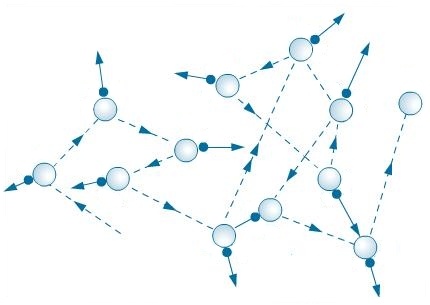

In this case, the impurity acted as a thermometer, where one detects temperature fluctuations from measurements of the position and momentum of the impurity. In the first project, we introduced a novel minimally disturbing method for sub-nK thermometry in a BEC. Then we proceeded with the construction of two microdevices, a quantum sub-nk thermometer and a heat diode. We show how the magnitude of the anomalous exponent reached and the duration of the subdiffusive interval can be controlled with the Rabi frequency of the coherent coupling between the two components and the coupling strength of the impurity to the BEC. Conversely, we find that it exhibits a transient nontrivial subdiffusive behavior if it couples attractively to one of the components and repulsively with the other. This is the same behavior of an impurity immersed in a single BEC. if it couples either attractively or repulsively to both of them. The particle superdiffuses if it couples in the same manner to both components, i.e. In our second work, we studied the diffusive behavior of a Bose Polaron immersed in a coherently coupled two-component BEC.

We study two scenarios:(i) In the absence of an external potential, we observe sudden death of entanglement (ii) In the presence of an external harmonic potential, where entanglement survives even at the asymptotic time limit. We treat these impurities as two quantum Brownian particles. In the first project, we study the creation of entanglement and squeezing of two uncoupled impurities that are immersed in a single common (BEC) bath. Taking advantage of this recent theoretical development, we study a number of phenomena that can be examined under this prism and show how various microdevices can be constructed and controlled.
QUANTUM BROWNIAN MOTION FREE
This was studied for both a free Bose-Einstein condensate (BEC) and a harmonically trapped one, in both cases for experimentally relevant parameters. Then by deriving the relevant QGLE, it was shown that the dynamics of the Bose polaron exhibit memory effects.

In this case, one transforms the original problem into one where the impurities are treated as quantum Brownian particles interacting with a bath composed of the Bogoliubov modes of the condensate. A Quantum Brownian motion approach is used in this work to study the Bose polaron problem. The simplest method to study the dynamics of a system undergoing such a type of motion, that satisfies Heisenberg Uncertainty principle is the approach of Quantum Generalized Langevin Equations (QGLE), which was used throughout this thesis. Quantum Brownian motion is one of the most prominent examples of an open quantum system, a system which cannot be treated in isolation from its environment.


 0 kommentar(er)
0 kommentar(er)
